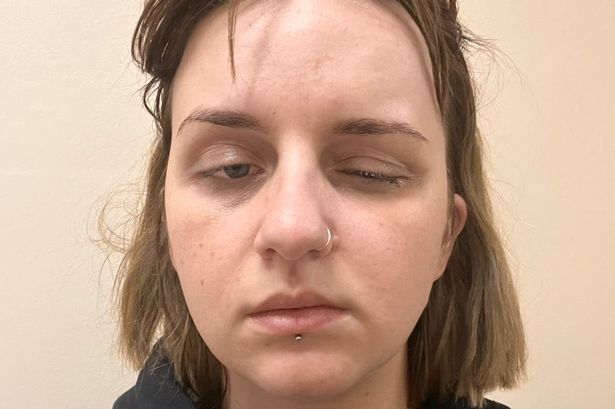Leona’s world began to unravel subtly, almost imperceptibly. Initially, she experienced fleeting moments of dizziness, so brief and insignificant that she dismissed them as fatigue or perhaps a touch of low blood sugar. These episodes, however, increased in frequency and intensity. The dizziness became accompanied by a tingling numbness that spread down her left arm, a disconcerting weakness in her left leg, and occasional slurring of speech. Alarmed, Leona sought medical attention, embarking on a frustrating odyssey of tests and consultations. Doctors initially struggled to pinpoint the cause of her symptoms, which mimicked those of a stroke but without any evidence of vascular blockage or bleeding in the brain. The baffling nature of her condition led to a battery of examinations: MRI scans, CT scans, blood tests, and neurological evaluations. Each test came back normal, deepening the mystery and increasing Leona’s anxiety. It was a disheartening process, filled with uncertainty and the gnawing fear of an undiagnosed, potentially debilitating illness.
After weeks of inconclusive results, Leona was finally referred to a specialist in rare neurological disorders. The specialist, Dr. Ramirez, listened intently as Leona recounted her symptoms and the frustrating diagnostic journey she had endured. Dr. Ramirez recognized a pattern in Leona’s description, a pattern that pointed towards a rare condition known as Reversible Cerebral Vasoconstriction Syndrome (RCVS). RCVS is characterized by a temporary narrowing of the blood vessels in the brain, leading to reduced blood flow and the onset of stroke-like symptoms. While the exact cause of RCVS remains elusive, it is often triggered by certain medications, stressors, or hormonal fluctuations. Dr. Ramirez ordered a specialized angiogram, a detailed imaging test that visualizes the blood vessels in the brain. The angiogram confirmed Dr. Ramirez’s suspicion, revealing the telltale signs of vasoconstriction in Leona’s cerebral arteries. Finally, after weeks of uncertainty, Leona had a diagnosis.
The diagnosis of RCVS brought a sense of relief, but also a new set of challenges. While the condition is typically reversible, the acute phase can be fraught with risk. The narrowed blood vessels can lead to reduced oxygen supply to the brain, increasing the risk of actual strokes or seizures. Leona was immediately hospitalized for close monitoring and treatment. The primary goal of treatment was to alleviate the vasoconstriction and prevent further neurological damage. This involved administering medications, such as calcium channel blockers, to relax and dilate the constricted blood vessels. Leona was also prescribed medication to manage her pain, which had become increasingly severe as the condition progressed. The hospital environment, while providing necessary medical care, was also a source of anxiety for Leona. Being confined to a bed, surrounded by the constant beeping of monitors, amplified her fears about the future.
During her hospitalization, Leona received unwavering support from her family and friends. Their visits, phone calls, and encouraging messages were a lifeline, reminding her that she was not alone in this battle. Her husband, Mark, became her advocate, tirelessly researching RCVS and communicating with the medical team. He learned about the importance of managing stress and avoiding triggers that could exacerbate the condition. He also discovered online support groups for individuals with RCVS, connecting Leona with others who understood her struggles. These connections proved invaluable, providing Leona with a sense of community and the reassurance that she was not the only one facing this rare and challenging condition. Sharing experiences and coping strategies with others who had walked a similar path empowered Leona and strengthened her resolve to overcome RCVS.
As the days turned into weeks, Leona’s condition gradually improved. The vasoconstriction began to resolve, and her stroke-like symptoms subsided. The dizziness, numbness, and weakness gradually faded, replaced by a growing sense of hope. With each passing day, Leona regained a little more of her former self. She began participating in physical therapy to regain her strength and coordination. The therapist worked with her on exercises to improve her balance and mobility, gradually increasing the intensity as she progressed. Leona also engaged in occupational therapy, focusing on regaining fine motor skills and adapting to any lingering challenges. The therapists helped her develop strategies to manage daily tasks, such as dressing and cooking, with greater ease and independence.
After several weeks of inpatient care, Leona was finally discharged from the hospital. While she was overjoyed to return home, she also felt a sense of apprehension about navigating life with RCVS. She knew that the road to full recovery would be long and challenging, but she was determined to persevere. Leona continued her physical and occupational therapy on an outpatient basis, diligently following the prescribed exercises and strategies. She also adopted lifestyle changes to minimize stress and avoid potential triggers, such as certain medications and caffeine. She incorporated relaxation techniques, such as meditation and deep breathing, into her daily routine to manage stress and promote overall well-being. Leona’s journey with RCVS was a testament to her resilience and the power of human connection. Through unwavering determination, the support of loved ones, and the expertise of medical professionals, she navigated the challenges of a rare and often debilitating condition. Leona’s story serves as a beacon of hope for others facing similar battles, reminding them that they are not alone and that recovery, while challenging, is possible.














